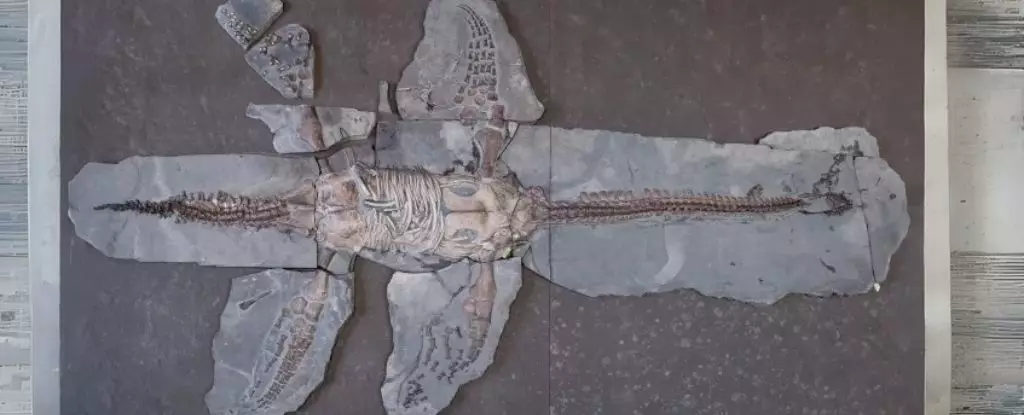Plesiosaurs, the enigmatic marine reptiles known for their long necks and four flippers, roamed the oceans during the Mesozoic era, predominantly in the Jurassic period. As some of the most successful predators of their time, they have fascinated paleontologists and enthusiasts alike. Recent discoveries, particularly regarding the structural characteristics of their flippers, have unveiled crucial insights into their biology and behavior, expanding our understanding of these prehistoric creatures.
A recent analysis led by paleontologist Miguel Marx and his team at Lund University has brought to light a remarkably well-preserved plesiosaur fossil designated MH 7, approximately 4.5 meters long and dating back 183 million years. Excavated from Holzmaden, Germany, in 1940, this fossil not only provides a glimpse into the plesiosaur’s anatomy but also serves as a vital link in understanding their evolutionary adaptations. Unlike the majority of soft tissue samples from dinosaurs, which are scarce, the limited observations from pleiosaurs have not dissuaded researchers from exploring what these animals might have looked like and how they thrived in their environments.
The exceptional condition of the MH 7 fossil prompted an in-depth application of microscopy and spectroscopy techniques, enabling researchers to analyze the fossil’s soft tissue components and structural features. This groundbreaking work is essential for piecing together the evolutionary narrative of plesiosaurs, offering a fresh perspective on their physiology.
One of the key findings from the recent study concerns the scales found on the plesiosaur’s flippers. Unlike the smooth skin observed on the tail, the flippers showcased small irregular triangular structures that bear resemblance to the scales found on modern sea turtles. This differentiation suggests a variety of functions; while the streamlined body adapted for efficient swimming, the scaled structure of the flippers may have facilitated either thrust in aquatic environments or grip on the ocean floor.
Researchers propose that the evolutionary trajectory of these scales may have resulted from convergent evolution, driven by similar hydrodynamic pressures and ecological niches. The functional role of the flipper scales is particularly intriguing and seems to have been beneficial for traction, especially during activities such as benthic grazing—an aspect corroborated by the discovery of fossilized stomach contents filled with crustaceans and snails.
Plesiosaurs were not merely passive swimmers; their anatomical features indicate that they were dynamic predators, capable of sophisticated hunting strategies. Evidence suggests that, in addition to their scale adaptations, these reptiles could have employed a “bottom-walking” technique while foraging on the seafloor. Such behavior aligns with the preserved traces discovered in the sediment they left behind, pointing towards an evolutionary strategy that allowed them to capitalize on a rich, bottom-dwelling food supply.
The implications of these findings extend beyond anatomical features. The scales along their flippers might have conferred a distinct adaptive advantage in ensuring success in the competitive marine ecosystems of their time. While ichthyosaurs, another group of marine reptiles, evolved smoother bodies to minimize drag, plesiosaurs retained some reptilian characteristics, suggesting a diverse range of survival strategies within prehistoric marine environments.
The revelations from the study of the MH 7 plesiosaur provide a compelling glimpse into the lives of these ancient marine reptiles. The varied adaptations—including flipper scales and anatomical designs—highlight the complex evolution of marine life during the Jurassic period. As paleontologists continue to uncover more fossilized evidence, the ongoing research promises to enrich our understanding of plesiosaurs and their ecological roles.
Future inquiries are likely to delve deeper into the evolutionary pressures that shaped their survival and adaptation strategies. By comparing paleontological data with modern marine reptile biology, researchers may continue to unravel the intricate tapestry of life beneath the prehistoric seas, further unraveling the mysteries of the plesiosaur, a true marvel of evolutionary history.


Leave a Reply